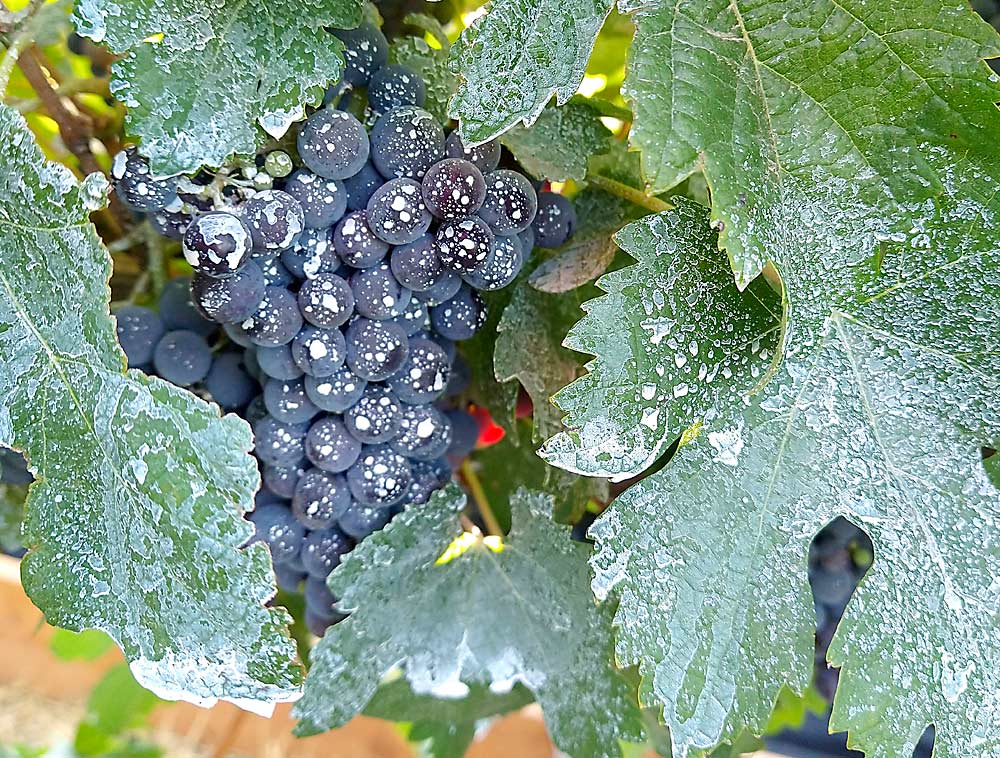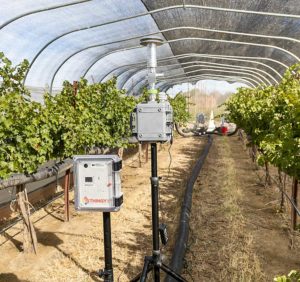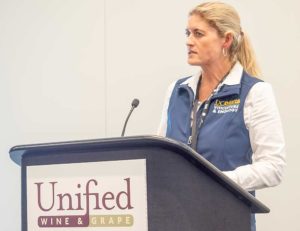
Wildfire smoke exposure remains a top research priority for the wine industry as we work to find solutions to the negative impacts experienced across the West in recent years. Congress recently appropriated $5 million annually to smoke research, allowing new scientists hired by the U.S. Department of Agriculture to initiate a variety of important projects. This influx of funding bolstered smoke research at three West Coast universities and supports work on a new website to make smoke resources more accessible to growers and wineries.
The Washington State Wine Commission continues to have direct input in smoke research. At the state level, we fund smoke research at Washington State University. Regionally, we serve on the advisory committee of the $7.65 million research grant funded by the USDA’s Specialty Crop Research Initiative (SCRI) and on the steering committee of the West Coast Smoke Exposure Task Force. And nationally, through the task force, we work closely with USDA to provide stakeholder input as the agency builds its new smoke exposure research program.
We now know that the threat presented by wildfires is most predominantly from persistent, dense smoke that can blanket vineyards. If grapes are exposed to smoke at high enough levels and for a long enough time, volatile phenols in the smoke can be absorbed by the grapevine and become bound to sugars and other compounds in the grapes. During fermentation and aging of wine, the smoke compounds are released from their bound form, and the wine can take on burnt aromas and flavors that make it unmarketable. Currently available tools can remove the unwanted free or unbound phenols, but the processes also remove desirable color and flavor attributes and reduce wine quality.
Research update
Since 2016, the Washington wine industry has supported research led by Tom Collins, grape and wine chemist at WSU. Collins is also part of a powerhouse research team — including Elizabeth Tomasino at Oregon State University and Anita Oberholster at University of California, Davis — that heads the federal SCRI grant. The West Coast Smoke Exposure Task Force shares research progress and updates at a Smoke Summit each year.
In the past year, Collins and his collaborators continued to build on their 2022 discovery of a new class of sulfur compounds called thiophenols that can cause smoky/ashy aromas when combined with volatile phenols. This breakthrough helps explain why some grapes with low levels of the original markers (guaiacol and 4-methylguaiacol) resulted in smoky wines, while others with higher levels did not. Other research focus areas supported by the Washington wine industry are highlighted below:
Vineyard barrier sprays: Earlier work by Collins showed that kaolin and bentonite clays applied as a protective barrier before smoke exposure could reduce the uptake of smoke-related compounds by 50 percent or more, provided the clays were washed off after the smoke exposure. In 2023, Collins evaluated ways to remove the protective materials with water, and he assessed the timing of applications from one to four weeks prior to smoke to learn how long they provide protection. Other protective barriers such as polymers, calcium and other compounds are also under study.
Winemaking mitigation through enzymes: Enzymes produced by yeasts during fermentation bring about different attributes in wine, like mouthfeel, aromas and flavors. In the search for enzymes that could help winemakers mitigate smoke effects in wine, WSU is working to immobilize enzymes on beads to make it easier to cleave the phenol glycosides. After the wines are run through the enzyme column, the freed phenols are removed by running the wine through an adsorbent bed. Initial trials show the concept works in small batches. Efforts are underway to create a continuous system that would use such beads in columns to run the wine through. Preliminary work shows that the beads and enzymes could be reused.
RNA transcriptomics/metabolomics: Collins is collaborating with WSU’s Stephen Ficklin and Amit Dhingra, former WSU molecular plant scientist now at Texas A&M University, to understand the grapevine responses to smoke exposure and how the plant turns off or on pathways for defense mechanisms. This basic research will help scientists better understand why there seem to be changes in anthocyanins and delayed ripening in grapes after a smoke event.
Support from the Washington wine industry launched this research, which began under a Washington State Department of Agriculture Specialty Crop Block Grant and is now funded by the USDA smoke research program.
Vineyard air sensor network: The Collins research team installed a network of 25 vineyard air sensors in Washington in 2022 to collect data during smoke events. Unfortunately, some of the units have struggled to stay operational; thus, redesign is underway. The sensors allow collection of data during smoke events, which would then be correlated to impacts in fruit and resulting wine.
Last summer, Collins also used smoke tubes to draw air samples of smoke in Washington vineyards that originated from wildfires in British Columbia. This is part of a larger effort that included smoke collection in Oregon and California as conditions presented the opportunity. It will help scientists learn about the composition of smoke and compare it to vineyard sensor data. Vineyard sensors measure the density of the smoke, but not what’s in it — the specific phenols and volatile aromas. The samples also provided a picture of how quickly the British Columbia smoke had degraded and confirmed that the smoke would not be a widespread problem for Washington’s wine industry.
USDA program underway
As directed by Congress, USDA’s Agricultural Research Service (ARS) has created a new, long-term smoke research program. The new program has plans to hire three full-time scientists — one has already been hired, and hiring of the second is in the works. Arran Rumbaugh, ARS wine chemist, is located at Davis, California. The additional two positions will be located at the Albany, California, headquarters for the ARS Pacific West Area.
ARS scientists have begun to evaluate the microbiome of grapes to learn if bacteria could break down glycosides on the surface of berries. Initial work in these studies was done in the smoke-exposure trials at WSU in 2022 and is an example of the collaboration between WSU and ARS. Other projects are focused on developing a quick smoke-exposure detection tool for growers to use in the field; collecting and building baseline data for threshold levels of smoke compounds in grapes; predictive modeling of smoke movement in vineyards; and understanding the long-term effect on vineyard health and grapevine physiology from repeated smoke exposure. Plant breeding is a long-term ARS research goal.
Outreach activities
As smoke research efforts expand, it is important to keep growers and wineries updated with the latest research findings. The steering committee of the West Coast Smoke Exposure Task Force recognizes there has been a lack of coordinated stakeholder communication. A collaborative effort between the task force and ARS recently found a way to support a smoke research website that will be funded by ARS and managed by the task force. The website will be a hub for all things related to smoke exposure, including research summaries, articles and briefs, videos, extension materials and past recordings of Smoke Summit meetings and webinars.
The task force will also work to develop a regular platform for information, such as a newsletter, that can be shared through wine organizations.
We look forward to sharing this expanded smoke research information with Washington’s wine industry and will continue working to bring smoke exposure solutions to growers and wineries.
—by Melissa Hansen








Leave A Comment